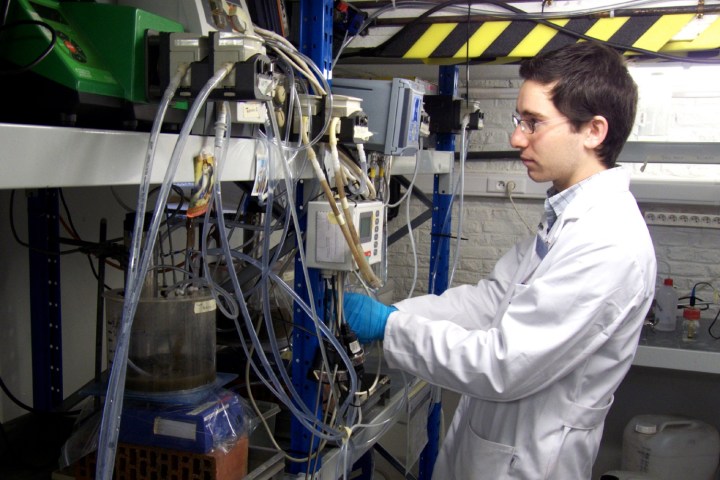
Don’t believe us? Just ask the team of microbiologists and biochemists working at Ghent University in Belgium, in collaboration with DC Water in Washington DC. They’ve developed a pilot program capable of doubling the quantity of biogas, heat, and electrical energy that can be extracted from sewage.
Essentially, it’s a potentially massive source of energy — and it all comes from poop-eating bacteria.
The process itself is based on an upgrade of existing sewage treatment processes called the “contact-stabilization process.” This process uses various enzymes and micro-organisms to deal with waste — which, in most cases, makes it no longer hazardous to the environment.
However, it’s not necessarily the most efficient of processes.
“Typically, wastewater treatment systems consume a lot of energy and are relatively expensive,” lead researcher Francis Meerburg told Digital Trends. “This is mainly due to electricity consumption by the mechanical equipment of the installation, such as pumps, and because the activated sludge bacteria need a large supply of oxygen, which is bubbled through the water through large blowers. Disposal of waste sludge can also contribute to the high costs of wastewater treatment, depending on the way the sludge is treated.”
The new solution Meerberg has helped pioneer involves “starving” bacteria prior to reintroducing it to wastewater so that it munches up the … ahem … organic material without ingesting it all. The undigested material can then be harvested and used to produce energy.
To put this all in perspective, using Meerburg’s system, roughly 55 percent of the organic matter can be recovered from sewage, compared to 20 to 30 percent using current methods. And it’s pretty darn self-sufficient as well.
“My calculations show that, unlike other high-rate systems, a high-rate contact stabilization system, coupled with anaerobic digestion of the sludge, should be able to produce enough electricity to run the wastewater treatment plant,” he said.
While the research is still in its early stages, it is already being explored by the aforementioned DC Water, as well as Virginia’s Hampton Roads Sanitation District, and the Flemish wastewater treatment agency, Aquafin.
Although bottlenecks still exist (mainly related to structural costs and a lack of incentive to replace even inefficient systems), it’s still extremely promising technology.
Editors' Recommendations
- How this supercomputer will use A.I. to map the universe’s dark energy
- Clean-energy startup backed by Bill Gates hopes to replace fossil fuels


